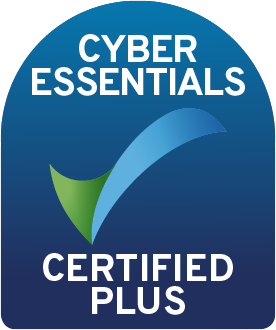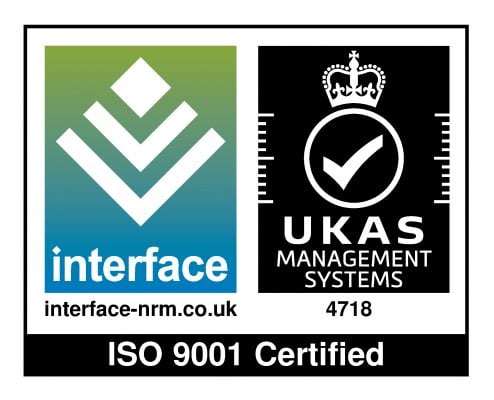With more and more organisations embracing virtual learning, the e-learning industry continues to grow and adapt to suit the evolving needs of learners and teachers. With the continued rise of remote learning, virtual learning environments (VLEs) have become essential to modern-day L&D.
In 2025, organisations across all sectors are leveraging VLEs to improve learner engagement, streamline training, and boost outcomes. But what exactly is a VLE, and how can it benefit your organisation’s e-learning approach?
TL;DR – What is a Virtual Learning Environment (VLE)?
-
A VLE is an online platform that replicates and enhances the classroom experience.
-
It includes tools for social learning, collaboration, and communication.
-
Engaging lesson formats like microlearning and gamification boost learner interest.
-
Real-time reporting and analytics help track progress and support learners.
-
Implementing a VLE requires a robust, integrated e-learning system.
What is a VLE?

What does VLE mean?
What is a VLE? A VLE, or Virtual Learning Environment, is a digital space that utilises e-learning software to not only replicate the physical classroom setting but also further enhance it by leveraging powerful tools and systems to enrich the learning experience.
An online learning platform, in its most basic form, is used to house online courses/documents which students and teachers can access. This basic use of the platform offers little interactivity for learners other than a means for simply completing the online learning course material. For teachers, it serves as no more than a course management system. Most organisations using an online learning platform will, of course, use their platform’s more advanced features, particularly if they’re using a modern learning management system (LMS).
The purpose of a VLE is to enhance both offline and online learning by creating a more engaging, dynamic and interactive user experience. This may include areas such as online activities, communication and collaboration, assessments and reporting functions. To better understand how to deliver a VLE, let’s further explore some of the components that go into creating it.
.png?width=924&height=523&name=Copy%20of%20LMS%20functionality%20pics%20(6).png)
What is included in a virtual learning environment?
Social learning in a VLE
A key strength of any effective virtual learning environment is how it supports social learning. One of the common criticisms of online learning has always been the lack of human connection. But today’s VLEs are designed to overcome that.
Teachers and students may use integrations such as Microsoft Teams to engage in virtual training sessions, Q&A sessions, or seminar-style discussion sessions. Learning and engagement can also take place using LMS features such as discussion forums, message boards, by commenting on learning content or direct messaging. If a learner is finding the subject matter of a course difficult, they can easily turn to their peers for help through real-time communication.
Whether it’s commenting on course content, messaging peers, or sharing resources, the modern VLE helps foster a genuine learning community.
Learner collaboration
Social learning naturally leads to collaboration. A strong virtual learning environment creates opportunities for learners to work together, contribute ideas, and influence their own learning experience.
One way to achieve this is to encourage feedback from users. Acquired through polls, feedback forms, and discussion boards, user feedback for a VLE means admins and teachers can improve the learning experience. Learners are more likely to be engaged with the platform if they have the option to contribute to its development and improvements.
.png?width=922&height=522&name=Copy%20of%20LMS%20functionality%20pics%20(7).png)
How to deliver engaging lessons in a virtual learning environment
In order to create the rich, lively and effective learning experience that makes up a VLE, you need to ensure that lessons are engaging, with plenty of variety to keep learners interested.
In 2025, attention spans are short and expectations are high. To keep learners interested, your virtual learning environment needs to offer content in multiple formats. That could mean mixing video, audio, quizzes, infographics, simulations, or even podcasts. The goal is to meet learners where they are and how they prefer to learn.
An easy way to deliver a variety of lesson styles whilst maintaining structure is to use the microlearning technique. Microlearning typically consists of short, concise lessons that usually take under 10/15minutes to consume. Learners can consume these shorter lessons at their own pace, with the breathing space to understand the subject matter without feeling overwhelmed by huge amounts of information.
Boost engagement even further by introducing gamification to your VLE. This consists of game-style lessons and online games, such as matching the word to the definition or guided simulation. Gamification delivers the level of interactivity that is expected in a VLE.
Real-time assessment and reporting
An effective virtual learning environment doesn’t just deliver content; it tracks how well learners are engaging with it. In fact, analytics and reporting are some of the biggest advantages of using a VLE in 2025.
A vital part of creating an effective VLE is monitoring the progress of learners. A VLE should feel alive, with continuous activity and interaction amongst users. If a learner is completing online lessons with little to no feedback or input from teachers/trainers, it can feel isolating, particularly if a learner is struggling with course content.
Using analytics and reporting tools in an LMS or performance management platform, administrators can see the progress of a learner in real-time by looking at areas such as completion rates, pass marks, log-in frequency, time spent on individual lessons and more. Teachers or trainers can use this data to support learners with continuous feedback, offering additional training sessions if needed or praising achievement and highlighting those who are excelling. Without a virtual learning environment, this type of in-depth, frequent reporting is much harder to achieve when relying on offline assessments or lesson completion.
Creating a virtual learning environment in 2025
Now that you know what a virtual learning environment is and what it can do, how do you go about creating one?
The key to building an effective virtual learning environment is choosing a robust, user-friendly platform that brings all your learning tools together. Whether you're using a single system or combining tools (like an LMS and performance management platform), everything must integrate smoothly.
Mobile compatibility is also a must in 2025. Learners expect to access content on their phones, tablets, or laptops, anywhere, any time. A mobile-friendly VLE ensures that your training or educational content is always within reach.
One of the most efficient ways to implement a powerful VLE is through our Totara Suite solution, which combines the flexibility of an LMS with advanced LXP and performance tools.
Ready to implement your VLE?
As a Totara Platinum Alliance Partner and Moodle expert, we design and deliver high-quality e-learning solutions for leading UK businesses and organisations, building lasting relationships so that they can realise the full potential of their learning and development projects.
If you’re ready to create a modern, flexible, and engaging virtual learning environment, we’d love to help. Get in touch with one of our experts to discover how a Totara-powered solution can transform your learning and development strategy.

Explore HubkenCore – our unique SaaS LMS offering
Ready to see how our new LMS bundled solution is revolutionising how you purchase an e-learning solution?
.png?width=1080&height=150&name=Slim%20blog%20CTAs%20(12).png)



